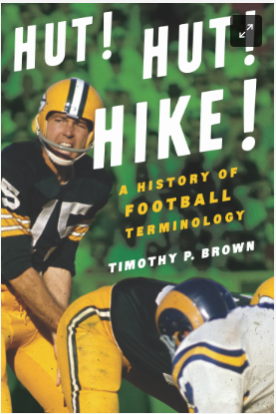Scotty Bowman Hockey Hall of Fame Coach
Martin Dihigo Baseball Hall of Fame Outfielder
Dihigo's professional journey began in Cuba in 1922, but his talents quickly transcended borders. He played extensively in the Negro Leagues from 1923 to the 1940s, showcasing his versatility across all nine positions. Statistics show a strong hitter with a .307 batting average and a slugger with over 129 home runs across his career. But Dihigo wasn't just a threat at the plate – he was a dominant pitcher as well. Though estimates vary, he's credited with over 100 wins and a sub-4 ERA, solidifying his two-way prowess.
His talents extended beyond the Negro Leagues. Dihigo played and managed teams in Cuba, Mexico, Venezuela, and the Dominican Republic, leaving his mark on Latin American baseball as well. Stories abound of his incredible feats, like throwing the first no-hitter in Mexican League history while simultaneously winning the batting title in the same season.
Born May 25, 1905, in Cidra, Cuba, was Baseball Hall of Fame Out Fielder Martin Dihigo. Martin played in the Negro Leagues of Baseball for the Cuban Stars (East) (1923–1927, 1930), Homestead Grays (1927–28), Hilldale Giants (1929, 1930–31), and the New York Cubans (1935–36, 1945).
His honors and awards include being a two-time Negro League All-Star (1935, 1945), a four-time Cuban League MVP (1927/28, 1935/36, 1936/37, 1941/42), a Eastern Colored League batting champion (1926), and Dihigo has the distinction of being the only person to be inducted into five different Baseball Halls of Fame as his career is inducted in Hall in Cuba, Mexico and the United States.
Georges Vezina's Unbreakable Legacy
His journey began on the frozen ponds of Chicoutimi, Quebec. There, his natural agility and uncanny knack for stopping pucks were honed, laying the foundation for a career that would redefine the art of goaltending. In 1910, he joined the Montreal Canadiens, embarking on a 15-year odyssey to cement his place among the game's greatest.
Vezina's greatness wasn't measured in flashy saves or acrobatic leaps. It was in his quiet efficiency, his uncanny ability to read plays and position himself perfectly to snuff out scoring chances. He wasn't afraid to get dirty, throwing himself in front of slap shots and absorbing pucks with a stoic determination. He commanded his crease with the aura of an impassable fortress, instilling confidence in his teammates and striking fear into the hearts of opponents.
His impact went beyond statistics. Vezina led the Canadiens to four Stanley Cup victories, his calm presence a steadying force in the midst of playoff battles. He earned the respect of every player he faced, even those on rival teams who recognized his brilliance and sportsmanship. His sudden death in 1925 from complications of a deflected puck sent shockwaves through the hockey world.
To honor his legacy, the Vezina Trophy was established, awarded annually to the league's best goaltender. It became a symbol of Vezina's quiet grace and unwavering resilience, a constant reminder that greatness can come in unassuming packages.
Today, his name still echoes through the rafters of the Bell Centre, whispered by fans young and old. He stands as a testament to the power of dedication, composure, and a love for the game that transcended personal glory. Georges Vezina may not have been the flashiest player, but his name remains etched in the annals of hockey history, a silent tribute to the "Wall of Quebec," whose legacy continues to inspire generations of goaltenders to stand tall between the pipes and claim their own corner of greatness.
Rogers Hornsby And A Reign of Hitting Dominance
Born in 1897, Hornsby's path to baseball stardom wasn't conventional. After a brief stint in the minor leagues, he landed with the St. Louis Cardinals in 1915. While initially a backup, Hornsby's exceptional hitting prowess soon became evident. His unorthodox batting stance, with his feet almost parallel, belied a remarkable ability to make consistent contact and spray line drives across the field.
Hornsby's rise to dominance was meteoric. He led the National League in batting average seven times, including an astounding four consecutive seasons hitting over .400 – a feat unmatched in modern baseball. 1924, he reached the pinnacle, batting a staggering .424, the highest single-season average in the National League since 1894.
Beyond batting average, Hornsby excelled in other offensive categories. He won four RBI titles and led the league in on-base percentage a staggering nine times. His ability to get on base at an elite clip and solid base running made him a nightmare for opposing pitchers. While not a prolific home run hitter, Hornsby possessed a well-rounded offensive skill set that terrorized defenses for over two decades.
Hornsby's leadership qualities were fiercely debated. While some admired his dedication and focus on winning, others found his personality abrasive and his demanding nature off-putting. Despite these complexities, his impact on the teams he played for was undeniable. He led the St. Louis Cardinals to two World Series appearances in 1926 and 1931, winning the championship in 1926.
Hornsby's playing career spanned 23 seasons, during which he amassed a staggering .358 lifetime batting average, second only to Ty Cobb in baseball history. He was inducted into the Baseball Hall of Fame in 1942, a testament to his unmatched hitting prowess.
Rogers Hornsby's legacy transcends statistics and accolades. He revolutionized the concept of hitting not by raw power but by a meticulous approach focused on contact and consistency. He was a player who demanded the most of himself and his teammates, forever etching his name in baseball history as a true hitting legend and a dominant force during his era. Though his personality may not have endeared him to everyone, his relentless pursuit of hitting excellence and remarkable on-field achievements solidified his place as one of the greatest hitters ever to grace the game.
Whitey Ford
Early Brilliance and Military Duty (1950-1952):
-Burst onto the scene in 1950, winning 9 games with a stellar 2.81 ERA as a rookie.
-Drafted into the US Army, missing the 1951 and 1952 seasons, showcasing his dedication and commitment despite the interruption.
Dominating the World Series Stage (1953-1967):
-Became a cornerstone of the New York Yankees dynasty, appearing in a record 22 World Series games.
-Earned a remarkable 10 World Series wins, solidifying his reputation as a "big game" pitcher.
-Led the American League in wins three times and contributed to six World Series championships for the Yankees.
A Master of Control and Efficiency (1953-1967):
-Never pitched more than 255 innings in a season, emphasizing his remarkable durability and reliance on pinpoint control.
-Boasted a career 2.75 ERA, showcasing his ability to consistently limit runs.
-Despite not relying on overpowering fastballs, he mastered deception and location, earning him respect from batters and fans alike.
Legacy and Lasting Impact (1967-present):
-Retired in 1967 with a 236-106 record, boasting the best winning percentage (.690) of any modern pitcher with at least 150 victories.
-Inducted into the Baseball Hall of Fame in 1974, solidifying his place among baseball's greats.
-Revered by Yankees fans and the baseball community for his humility, sportsmanship, and unwavering contributions to the team's golden age.
Born October 21, 1928, in New York City, NY was Baseball Hall of Fame Pitcher Whitey Ford. This legend was a ten-time MLB All Star. Whitey was part of World Series Championships with the New York Yankees in 1950, 53, 56, 58, 61, and 62. He was honored as the MVP of the 1961 Series as he also took home the AL Cy Young Award that year as well.
Mike Modano Hockey Super Star
Modano's offensive prowess was on display from his early days. He quickly established himself as a prolific scorer, amassing over 1,000 points in his career, a feat achieved by only a select few American-born players. His smooth skating and exceptional vision made him a nightmare for opposing defenses. He could weave through defenders with ease, creating scoring opportunities for himself and his teammates.
Beyond his individual brilliance, Modano was a natural leader. He captained the Stars for a decade, and his competitive spirit and dedication inspired those around him. He was instrumental in the team's transition to a more defensive style under coach Ken Hitchcock, embracing his role as a two-way center while maintaining his offensive production.
Modano's defining moment was when he arrived in 1999. After years of playoff heartbreak, the Stars, fueled by Modano's leadership and clutch performances, finally captured the Stanley Cup. He etched his name in Dallas Stars lore, forever remembered as a champion and the face of the franchise during its most successful era.
Modano's impact extends beyond statistics and championships. He was a pioneer for American hockey, helping to popularize the sport in a traditionally non-traditional market like Texas. His success paved the way for future generations of American-born players, inspiring them to dream of NHL glory.
Even after his retirement in 2011, Modano's legacy continues to resonate. His jersey hangs in the rafters of American Airlines Center, a constant reminder of his contributions to the Stars organization. He remains a beloved figure in Dallas and a respected icon throughout the hockey world.
Mike Modano's career is a testament to hard work, dedication, and the ability to adapt and excel. He is more than just a hockey player; he is a symbol of the Stars' journey and a role model for aspiring athletes everywhere.
Born June 7, 1970, in Livonia, Michigan, was Hockey Hall of Fame Center, Mike Modano. Mike is most well known for his NHL career with the Minnesota North Stars/Dallas Stars franchise, where he was an eight-time NHL All Star. At the end of his career he spent a couple of seasons on the Detroit Red Wings. According to the players own website, Modano holds these acclaims; he holds the NHL all-time record for most points scored by a U.S. born player (1374), Goals by a player born in the United States (561), Playoff points by an American-born player, career (145), and Games played by an American-born forward (1499).
Cal Ripken Jr
Cal Ripken Jr., often called "Iron Man," etched his name in baseball history with an unmatched streak of consecutive games played and a career filled with achievements.
Here's a glimpse of his Early Life and Career:
-Drafted by the Baltimore Orioles in 1978, bypassing college to pursue his dream.
-Debuted in 1981 and transitioned from shortstop to third base, finding his perfect fit.
Won Rookie of the Year in 1982 and quickly established himself as a star.
The Iron Man Streak:
Began playing every game on May 30, 1982, due to an injury to teammate Rick Dempsey.
-The streak became a national phenomenon, capturing attention and admiration.
-Ended on September 6, 1995, at 2,131 games, breaking Lou Gehrig's record by 56 games.
Beyond the Streak:
-Two-time MVP (1982, 1983) and World Series champion in 1983.
-19 All-Star appearances, eight Silver Slugger Awards, and two Gold Glove Awards.
-Finished with a career batting average of .276, 431 home runs, and 1,695 RBIs.
-Recognized for his sportsmanship, work ethic, and dedication to the game.
The legendary Baseball Hall of Fame Iron Man of the Baltimore Orioles. One of the top MLB players to wear Jersey Number 8.
The Behind the Plate Stopper with the Big Stick
Born in 1947, Fisk's talent bloomed early. Drafted by the Boston Red Sox in 1967, he quickly rose, captivating fans with his raw power and defensive agility. In 1972, he burst onto the scene as a unanimous Rookie of the Year, setting the tone for a career total of highlights.
Fisk's offensive prowess was undeniable. He belted 376 career home runs, including a then-record 351 for a catcher. His 1985 season with the Chicago White Sox saw him launch a career-high 37 homers and drive in 107 runs, earning him a Silver Slugger Award. Throughout his career, Fisk consistently anchored lineups, his bat feared by pitchers across the league.
Behind the plate, Fisk was a wall. He held the record for most games caught (2,226) for 23 years, displaying a keen understanding of the game and the uncanny ability to calm even the fiercest pitching firestorms. His throws were laser-sharp, snaring base stealers with the efficiency of a seasoned hunter. He earned respect and admiration from pitchers and teammates, becoming a true leader on the field.
But Fisk's legacy is best encapsulated in that one swing in Game 6 of the 1975 World Series. Facing the Cincinnati Reds with two outs and the Boston Red Sox down by one in the bottom of the 12th inning, Fisk connected with a Dennis Eckersley fastball, sending it soaring toward left field. With a swing that seemed to defy gravity, he willed the ball fair, erupting into his iconic "waving" gesture as it cleared the wall and hit the foul pole. The stadium erupted in a moment etched forever in baseball history, Fisk and the Red Sox winning 7-6, forcing a Game 7 in the World Series with one legendary swing.
Fisk's career extended beyond that one moment, though. He played 24 seasons, amassing 13 All-Star appearances, three Gold Glove Awards, and even a stint as a designated hitter later in his career. He retired in 1993, his name forever linked to Fenway Park, and in 2000, he was inducted into the Baseball Hall of Fame.
The 1927 Yankees are still a Murderers’ Row,
Many experts consider the 1927 New York Yankees to be the greatest MLB team ever assembled. Their pitching was superb with Hall of Fame arms like Dutch Ruehter, Herb Pennock, and Joe Gaird and legends such as Waite Hoyt and Wilcy Moore were on staff as well. The regulars consisted of the Murderers Row of Babe Ruth, Lou Gehrig, Tony Lazzeri, Earle Combs, Ray Morehart, Cedric Durst and the gang. The won 110 games that season and then swept a very good Pittsburgh Pirates team in the World Series. The team also had the Record Home Run race between Gehrig and Ruth that set record attendance figures in almost every ball park they played in.
Greg Maddux The "Professor" on the Mound
-Path to the Big Leagues
Per Baseball Reference Maddux was drafted by the Chicago Cubs in the 2nd round of the 1984 MLB June Amateur Baseball Draft out of Valley High School in Las Vegas, Nevada. He made his MLB debut on September 2, 1986 against the Houston Astros and became a fixture on the Cubs staff the following season appearing in 30 games.
-Pinpoint control and dominance:
Maddux wasn't a flamethrower, but his accuracy and ability to locate his pitches frustrated batters. He won four Cy Young Awards in a row (1992-1995), a feat only matched by Randy Johnson.
-Atlanta Braves Era: His most successful stretch came with the Atlanta Braves (1993-2003). They won the National League West title every year during his tenure, reaching the World Series three times and winning it in 1995.
-Accolades and Longevity:
A stellar defensive player, Maddux holds the record for most Gold Glove Awards by a pitcher (18). He was an All-Star eight times and led the league in starts a record seven times. Remarkably durable, he only spent 15 days on the disabled list throughout his career.
-Career Highlights:
While never reaching 20 wins in a season more than twice, Maddux consistently piled up wins with a remarkable 18 seasons of at least 15 wins. He also holds the record for most seasons leading the league in games started (7).
Greg Maddux retired in 2008 and was inducted into the Baseball Hall of Fame in 2014. He's remembered as one of the smartest and most effective pitchers ever to play the game.
-Summary of Greg Maddux Career
Greg Maddux career sketch by the Society for American Baseball Research. Originally drafted in 1984 by the Chicago Cubs, Maddux won 18 Gold Gloves, four Cy Young Awards, four ERA titles, was an eight-time All-Star, and was on the 1995 World Series Champion Atlanta Braves. Born April 14, 1966 and inducted into the Baseball Hall of Fame, he is one of the top MLB players to have worn the Number 31 Jersey.



.jpg?https://jerseydispatch.com/pfeL/p/c312642c0431e75b485e432232c99c1c/website/Daily-Sports-Uniform-Number-History/February/February-8-Jersey-Numbers/Images/.Basketball_at_Pas-en-Artois,_France,_1918_(20166469838).jpg)
.jpg?https://jerseydispatch.com/pfeL/p/c312642c0431e75b485e432232c99c1c/website/Sports-History-Photo-of-the-Day/February-Images/February-8-Image/images/.640px-Arctic_Sisterhood_Basketball_banner,_Nome_(NOWELL_200).jpg)





